The late 1970s represented a challenging era for American muscle cars. With stricter emissions regulations, rising insurance costs, and the aftermath of the oil crisis, manufacturers struggled to maintain the high-performance standards that defined the muscle car golden age of the late 1960s. What resulted was a generation of vehicles that maintained aggressive styling cues but often delivered disappointing performance compared to their predecessors. Here’s a look at 13 muscle cars from this era that promised much with their appearance but fell short when the rubber met the road.
1. 1977-1979 Pontiac Trans Am
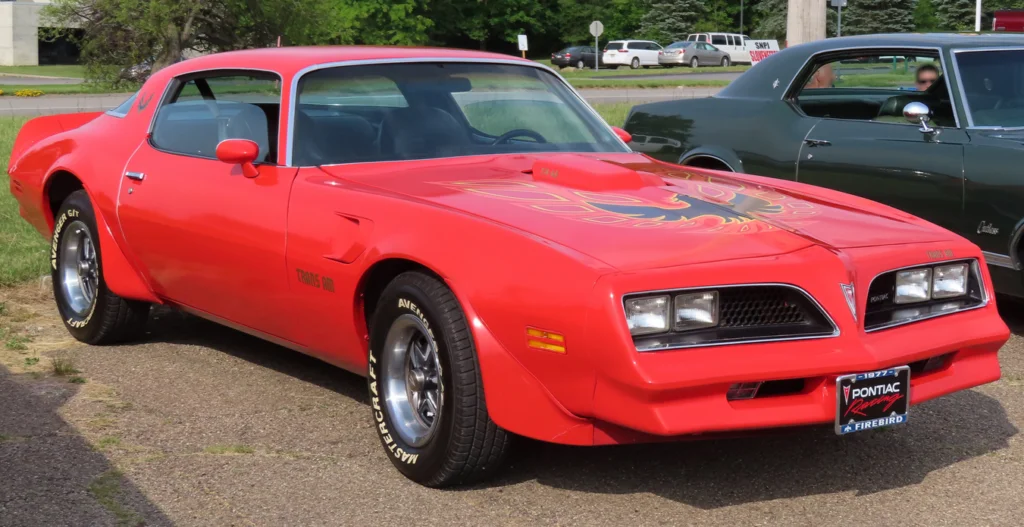
Few cars captured the American imagination like the black and gold Trans Am that Burt Reynolds made famous in “Smokey and the Bandit.” With its screaming chicken hood decal, shaker scoop, and aggressive styling, the late ’70s Trans Am looked like it could outrun any sheriff’s cruiser on the highway. However, despite its menacing appearance, the standard 1977-1979 models typically came with a 400-cubic-inch V8 that produced just 180-220 horsepower—a shadow of the 335 hp the same displacement engine had made just a few years earlier. Hot Rod revs up the engines on just how the Trans Am was born before becoming such a definitive vehicle for Pontiac.
The car’s 0-60 mph time of approximately 9 seconds and quarter-mile runs in the high 16-second range were respectable for the era but nowhere near the performance of earlier Trans Ams. Emissions equipment, catalytic converters, and unleaded fuel requirements had strangled the once-mighty Pontiac engines, leading to a car that was more show than go. Still beloved by enthusiasts, these Trans Ams represented the triumph of style over substance during one of Detroit’s most challenging periods.
2. 1975-1980 Chevrolet Camaro Rally Sport
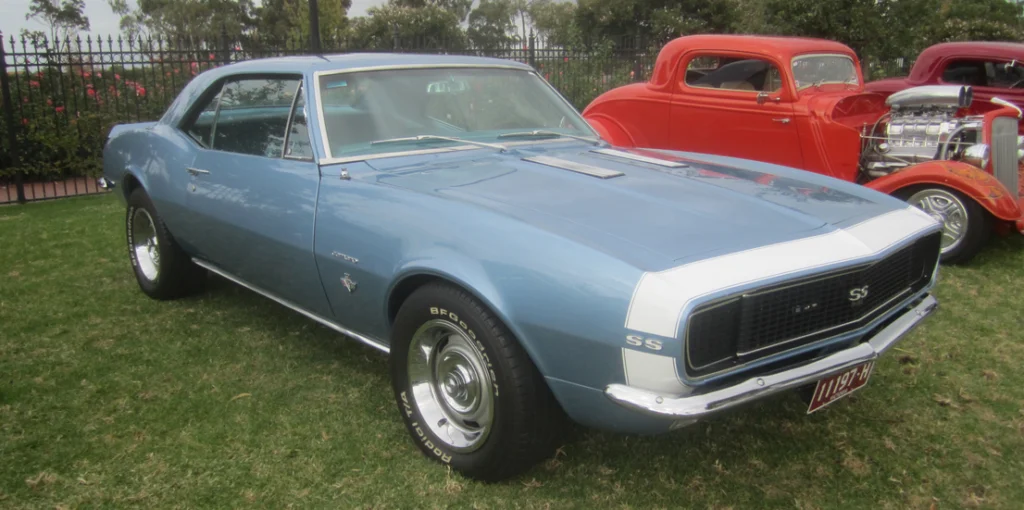
The second-generation Camaro continued through the late ’70s with styling that maintained its reputation as one of America’s most aggressive-looking cars, featuring a low, wide stance and muscular fender flares. The Rally Sport package added split bumpers, a distinctive grille, and sporty stripes that suggested serious performance credentials. Unfortunately, most 1975-1980 Camaro Rally Sports were equipped with either anemic six-cylinder engines or severely detuned V8s that produced as little as 145 horsepower in their base configurations. Car and Driver takes a cruise down memory lane to give a visual history of how this car has transformed before our eyes over the decades.
Even the Z28 performance model, reintroduced in 1977 after a brief hiatus, managed just 185 horsepower from its 350-cubic-inch V8—a far cry from the 360+ horsepower Z28s of the late 1960s. With 0-60 mph times averaging around 8.5 seconds for V8 models and quarter-mile times in the mid-16-second range, the Camaro Rally Sport became emblematic of the “malaise era” when American performance cars maintained their aggressive looks while losing much of their bite.
3. 1977-1979 Ford Mustang II Cobra II
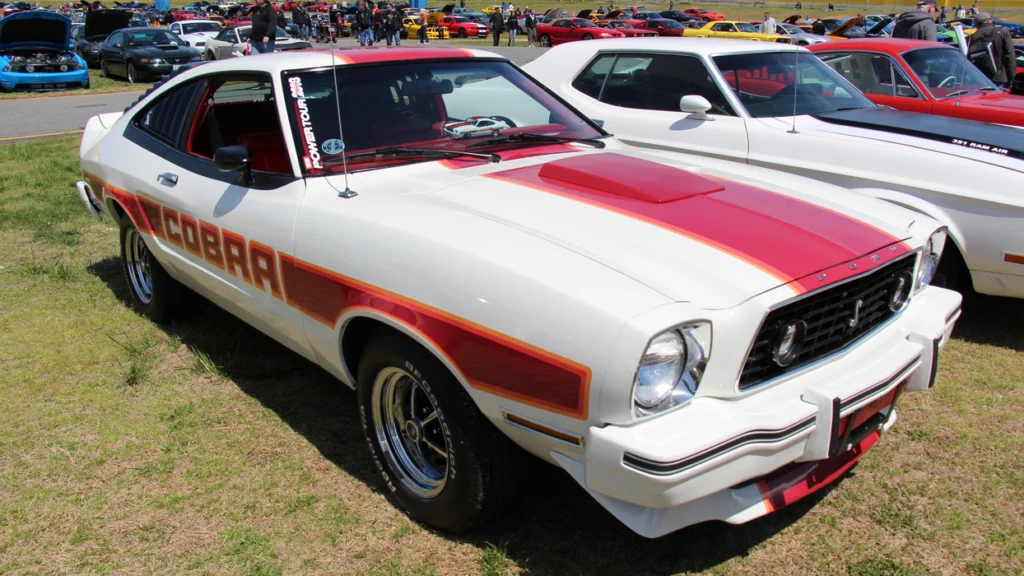
The Mustang II Cobra II package offered dramatic hood scoops, racing stripes, and spoilers clearly designed to evoke memories of the legendary Shelby Mustangs of the 1960s. With its elaborate graphics package, front and rear spoilers, and simulated hood scoop, the Cobra II looked like it belonged on a racetrack rather than cruising suburban streets. However, beneath this aggressive appearance often lurked a 302-cubic-inch (5.0L) V8 producing a mere 139 horsepower—less power than many of today’s four-cylinder family sedans. Curbside Classic credits the Cobra II with having a brief presence but making use of every second by leaving quite the impact on our roads and our hearts.
The car’s 0-60 mph time of approximately 10.5 seconds and quarter-mile times in the high 17-second range were downright sluggish by any performance car standard. Based on the Pinto platform and designed primarily as a response to the fuel crisis, the Mustang II Cobra II exemplified the dramatic performance decline that affected American muscle cars during this period. While the car helped Ford maintain Mustang sales during challenging times, it remains one of the most visually misleading performance cars of the era.
4. 1976-1980 Plymouth Volaré Road Runner
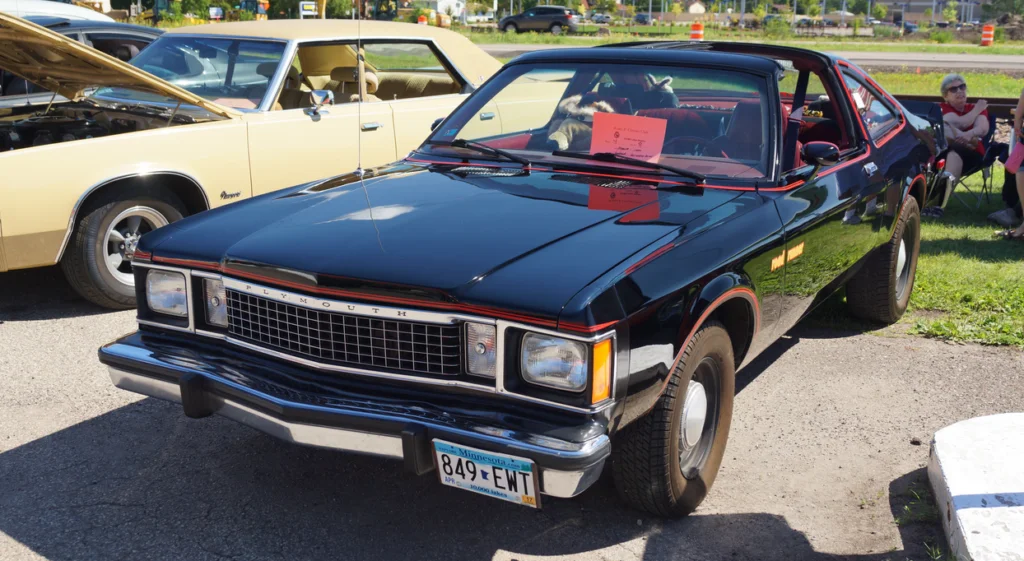
Plymouth’s decision to apply the storied Road Runner name to the Volaré—essentially an economy car with tape stripes and a hood bulge—remains one of the most controversial moves in muscle car history. The Road Runner package included bold graphics, a simulated hood scoop, and special wheels that attempted to channel the spirit of its legendary 1968-1970 predecessor. However, the Volaré Road Runner’s performance couldn’t have been further removed from the original tire-smoking 383 and 426 Hemi-powered Road Runners that had dominated drag strips a decade earlier.
Most Volaré Road Runners came equipped with either a 318-cubic-inch V8 producing just 145 horsepower or, for the slightly more adventurous, a 360-cubic-inch V8 rated at a still-modest 170 horsepower. Even with the larger engine, 0-60 mph times hovered around 8.5 seconds, with quarter-mile runs taking nearly 17 seconds—performance that would have been embarrassed by the original Road Runner. This model perfectly illustrated how muscle car names were increasingly being used as marketing tools for otherwise ordinary vehicles during the late 1970s.
5. 1977-1979 Oldsmobile 442
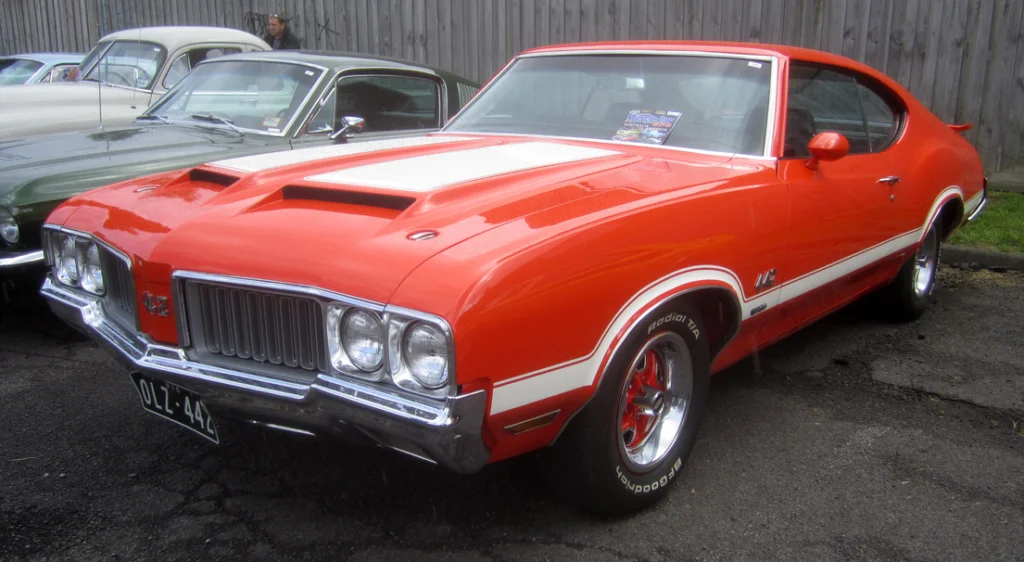
The Oldsmobile 442, once among the most fearsome muscle cars of the 1960s with its 455-cubic-inch V8 engines producing well over 360 horsepower, had by the late 1970s become little more than an appearance package for the more pedestrian Cutlass. The 442 designation—originally representing four-barrel carburetor, four-speed manual transmission, and dual exhausts—had become just a badge that no longer reflected the car’s mechanical specifications. By 1977-1979, the most powerful engine available in the 442 was a 305-cubic-inch V8 producing approximately 160 horsepower, or an optional 350-cubic-inch V8 making about 170 horsepower.
Despite retaining sporty styling elements like rallye wheels, hood bulges, and racing stripes, the late ’70s 442 delivered 0-60 mph times of around 9 seconds and quarter-mile runs in the mid-16-second range. The transformation of the once-mighty 442 into what amounted to a decal package symbolized the decline of American performance cars during this period. What made this particularly disappointing was that the Cutlass itself was one of America’s best-selling cars of the era, meaning these underwhelming 442s were highly visible reminders of how far muscle cars had fallen.
6. 1976-1979 Chevrolet Monza Spyder
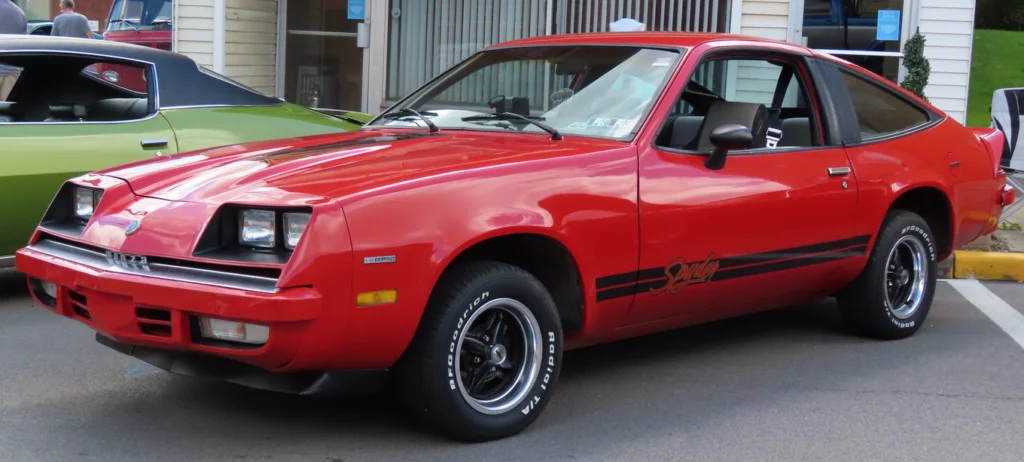
The Chevrolet Monza Spyder package offered an array of sporty visual enhancements including special striping, wheel flares, and a unique front air dam that gave this compact car an aggressive, ready-to-race appearance. Based on the same H-body platform as the ill-fated Vega, the Monza’s styling took inspiration from European sports cars, with a sloping fastback design that promised performance the car simply couldn’t deliver. Despite its racy looks, most Monzas were equipped with either an underpowered four-cylinder or a small 262-cubic-inch V8 producing just 110 horsepower.
Even when equipped with the more powerful (relatively speaking) 305-cubic-inch V8, the Monza Spyder produced only about 145 horsepower, resulting in 0-60 mph times of approximately 10 seconds. The car’s handling was actually decent for its time, but its straight-line performance failed to live up to the promises made by its appearance. The Monza Spyder represented Detroit’s attempt to create sporty-looking compact cars in response to fuel economy concerns and rising competition from imports, but these efforts often resulted in cars that prioritized style over substance.
7. 1977-1979 Dodge Aspen R/T
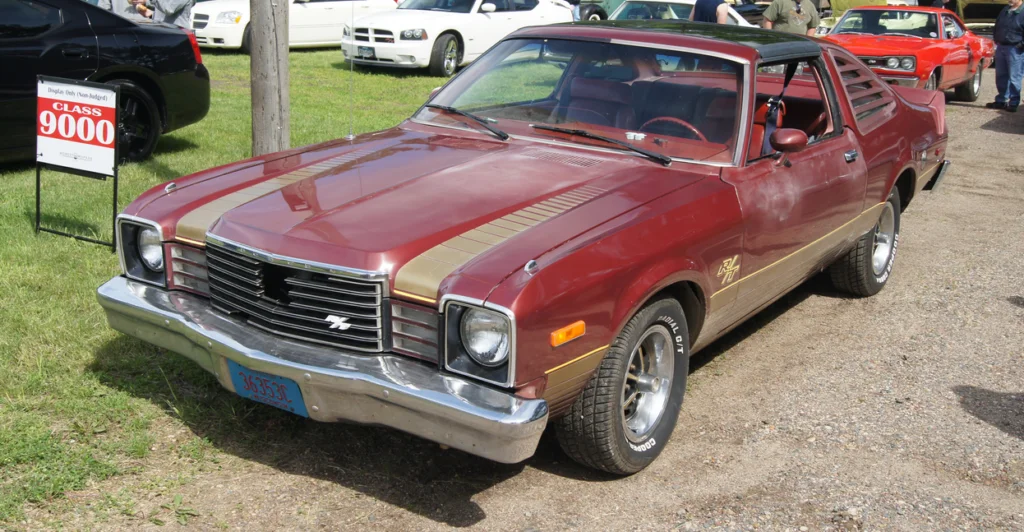
The Dodge Aspen R/T attempted to carry the performance torch from the legendary Dodge muscle cars of the late 1960s and early 1970s, wearing bold stripes, a rear spoiler, and other visual cues that harked back to the brand’s high-performance heritage. Marketing materials positioned the Aspen R/T as a modern interpretation of Mopar muscle, complete with aggressive hood scoops and performance-oriented styling. However, beneath this promising exterior typically lurked a 318-cubic-inch V8 producing a modest 145 horsepower, though a 360-cubic-inch V8 with 170 horsepower was available as an upgrade.
Even with the larger engine, the Aspen R/T’s performance was mediocre at best, with 0-60 mph times of around 8.5 seconds and quarter-mile times in the high 16-second range. The car’s straight-line acceleration was further hampered by its emissions equipment and relatively heavy weight compared to its power output. While the Aspen platform itself wasn’t terrible—and would later serve as the foundation for some police packages—the R/T version promised much more performance than it could deliver, making it a prime example of style over substance during this challenging period for American muscle cars.
8. 1977-1979 Mercury Cougar XR-7
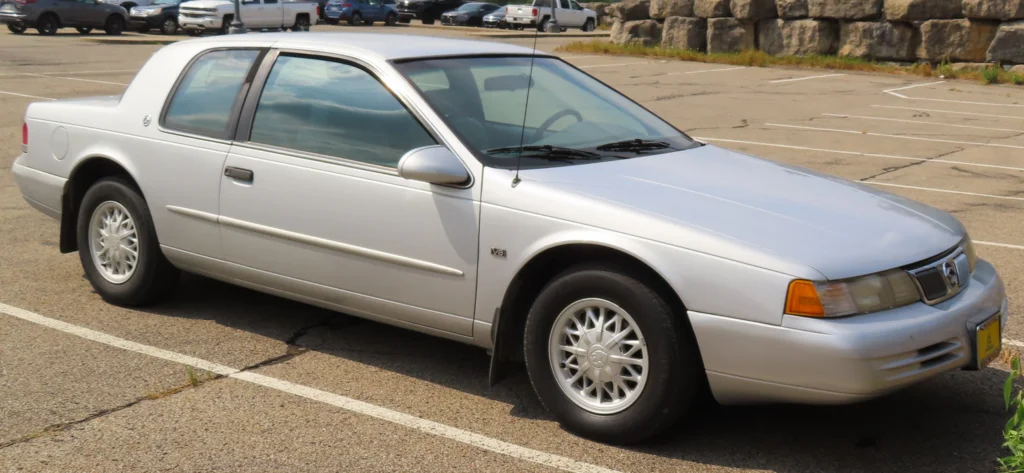
The Mercury Cougar XR-7 of the late 1970s maintained the personal luxury coupe’s long hood and short deck proportions that suggested serious performance potential, especially when equipped with the optional hood scoop and sport appearance packages. With its hidden headlights, distinctive grille, and available “chamois” vinyl roof, the Cougar XR-7 projected an image of sophisticated performance that had made earlier Cougars respected members of the muscle car community. However, by the late 1970s, the largest engine available was a 400-cubic-inch V8 producing just 180 horsepower—a far cry from the high-performance Cougars of a decade earlier.
The XR-7’s 0-60 mph time of approximately 9.5 seconds and quarter-mile times in the 17-second range placed it firmly in the “all show, no go” category that characterized many American performance cars of this era. The Cougar had grown substantially larger and heavier than its original incarnation, further compromising its performance credentials despite its aggressive styling cues. As with many Ford products of this era, the focus had shifted from performance to luxury features and ride comfort, leaving the Cougar XR-7 as more of a cruiser than a bruiser despite appearances to the contrary.
9. 1978-1979 AMC AMX

The AMC AMX name had once belonged to a shortened, two-seat version of the Javelin that offered genuine performance credentials, but by the late 1970s, it had been reduced to a appearance package for the compact Concord model. The 1978-1979 AMX featured a bold graphics package, wheel flares, a rear spoiler, and other visual enhancements that attempted to recapture the spirit of the original muscle car. Despite looking like a compact hot rod with its aggressive stance and sporty details, the late ’70s AMX was typically powered by a 304-cubic-inch V8 producing just 130 horsepower.
With this limited power output, the AMX managed 0-60 mph times of around 11 seconds and quarter-mile runs approaching 18 seconds—performance that would have been embarrassed by family sedans just a few years later. For a company fighting for survival in the marketplace, AMC’s decision to dilute the once-proud AMX name by applying it to such a low-performance vehicle seemed particularly desperate. While the car did offer decent handling for its time thanks to a heavy-duty suspension package, the AMX’s straight-line performance failed to live up to the promises made by its aggressive appearance.
10. 1976-1979 Ford Gran Torino Elite
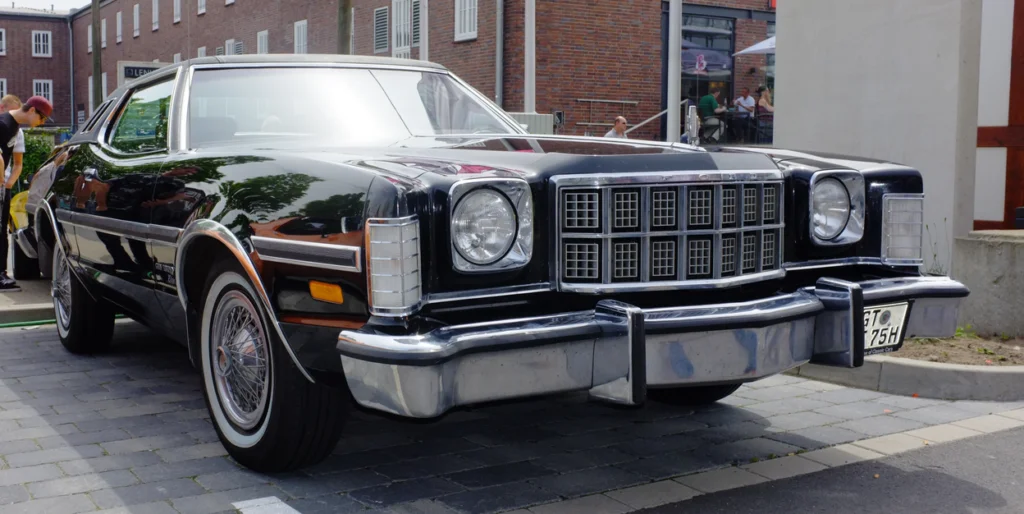
The Ford Gran Torino Elite combined the muscle car proportions of the Torino with luxury car styling cues, creating a personal luxury coupe that maintained aggressive styling despite its comfort-oriented mission. With its long hood, opera windows, and available two-tone paint schemes, the Elite projected an image of sophisticated performance that suggested it might be a worthy successor to the high-performance Torinos of the early 1970s. However, most Elites were equipped with a 351-cubic-inch Windsor V8 producing just 152 horsepower, though a 400-cubic-inch V8 with 180 horsepower was optional.
Even with the larger engine, the Gran Torino Elite’s substantial weight—often exceeding 4,000 pounds—resulted in leisurely 0-60 mph times of around 10.5 seconds and quarter-mile times in the high 17-second range. The car’s handling was also compromised by its size and weight, with soft suspension tuning that prioritized ride comfort over cornering ability. The Elite represented the industry trend toward combining muscle car styling elements with personal luxury features, creating vehicles that looked fast but were designed primarily for comfortable highway cruising rather than performance driving.
11. 1977-1979 Buick Century Turbo
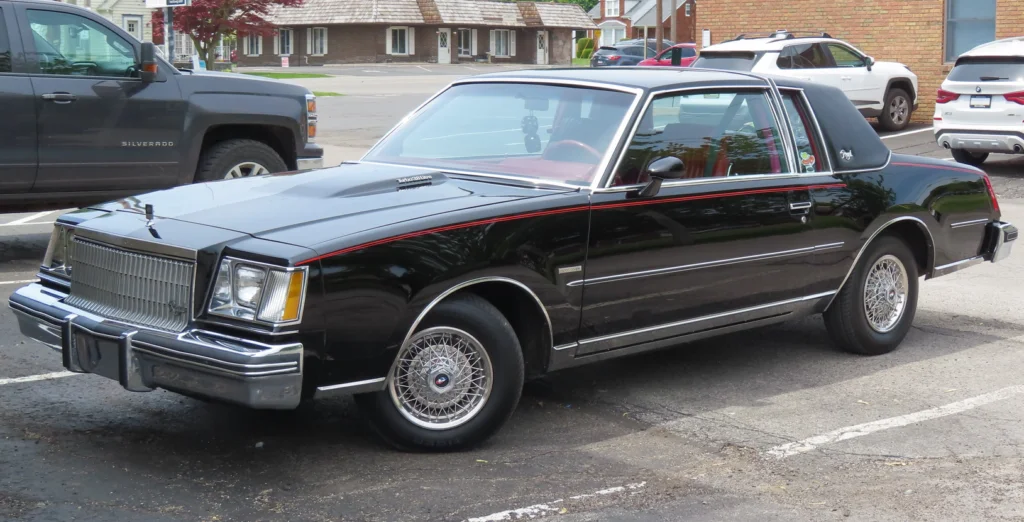
The Buick Century Turbo represented one of General Motors’ first attempts to restore performance through forced induction, featuring a turbocharged V6 engine that promised V8 power with improved fuel economy. With its special badges, unique wheels, and subtle appearance upgrades, the Century Turbo aimed to recapture some of Buick’s performance heritage while acknowledging the new reality of emissions regulations and fuel economy concerns. The turbocharged 231-cubic-inch (3.8L) V6 produced approximately 165 horsepower—respectable for the era but still modest compared to the muscle cars of just a decade earlier.
The Century Turbo’s 0-60 mph time of about 9 seconds and quarter-mile times in the mid-16-second range made it one of the quicker American cars of the late 1970s, but significant turbo lag and drivability issues often made the performance difficult to access in real-world driving. While the turbocharged V6 would eventually evolve into the formidable engines that powered the legendary Buick Grand Nationals of the 1980s, the late 1970s Century Turbo represented an experimental phase in forced induction technology that promised more than it could consistently deliver. The car’s conservative styling also meant that, unlike most entries on this list, it actually performed better than its modest appearance suggested.
12. 1976-1979 Pontiac Grand Prix SJ

The Pontiac Grand Prix SJ maintained the brand’s performance heritage visually with its long hood, short deck proportions, and aggressive nose styling that made it one of the most distinctive personal luxury coupes of the era. Available with special striping packages, rally wheels, and other sporty touches, the Grand Prix SJ projected an image of sophisticated performance that aligned with Pontiac’s “We Build Excitement” marketing approach. However, by the late 1970s, the most powerful engine available was a 400-cubic-inch V8 producing around 180 horsepower—a pale reflection of the 370+ horsepower Grand Prix SSJs of the late 1960s.
With its substantial curb weight approaching 4,000 pounds, the Grand Prix SJ delivered 0-60 mph times of approximately 9.5 seconds and quarter-mile runs in the high 16-second range. While not terrible for the malaise era, this level of performance failed to live up to the car’s aggressive styling and Pontiac’s performance-oriented brand image. Like many personal luxury coupes of the era, the Grand Prix SJ had evolved to prioritize comfort features and style over genuine performance capabilities, creating a disconnection between the car’s appearance and its actual performance potential.
13. 1977-1979 Chevrolet El Camino Classic
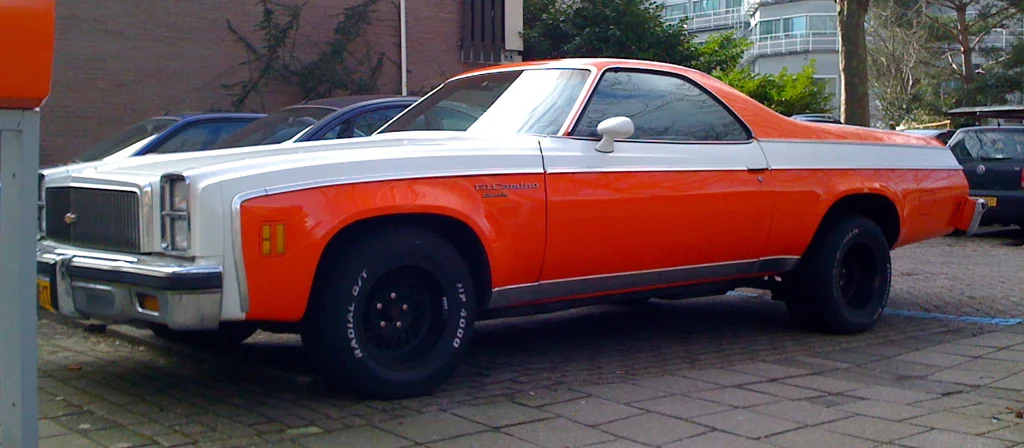
The Chevrolet El Camino Classic trim package added upscale visual elements to the unique car-truck hybrid, featuring deluxe interior appointments, extra chrome trim, and a more sophisticated appearance that belied its utilitarian nature. With its distinctive styling, wood-grain exterior trim accents, and plusher interior, the El Camino Classic projected an image of a more refined vehicle that still maintained sporty proportions and the promise of performance capability. Despite this upmarket appearance that suggested it might be both luxurious and powerful, the Classic model typically came equipped with the same underwhelming engine options as other El Caminos of the era—most commonly a 305-cubic-inch V8 producing just 145 horsepower, though a 350-cubic-inch V8 making around 170 horsepower was available at additional cost.
The El Camino Classic’s modest power output resulted in 0-60 mph times of approximately 9.5 seconds with the base V8 and quarter-mile times in the mid-to-high 16-second range—decidedly leisurely performance that contradicted its rakish profile and performance car heritage. The vehicle’s unique position as a car-based pickup had always made it something of a style statement, but during the late 1970s, the Classic trim further emphasized comfort and appearances over actual performance capability. Like many American vehicles during this challenging era, the El Camino Classic exemplified how manufacturers were forced to focus on cosmetic enhancements rather than mechanical improvements, creating vehicles that looked far more capable than they actually were when the accelerator pedal hit the floor.
The late 1970s represented the nadir of American performance car capability, with output figures that seem almost unbelievably low by modern standards. It would take the technological advances of the 1980s—including electronic fuel injection, more sophisticated engine management systems, and improved turbocharging—to begin restoring genuine performance to American muscle cars. While these vehicles may have failed to deliver on their visual promises, they did manage to keep performance car styling and enthusiasm alive during one of the most challenging periods in automotive history, preserving the muscle car concept until technology could once again catch up with ambition.


